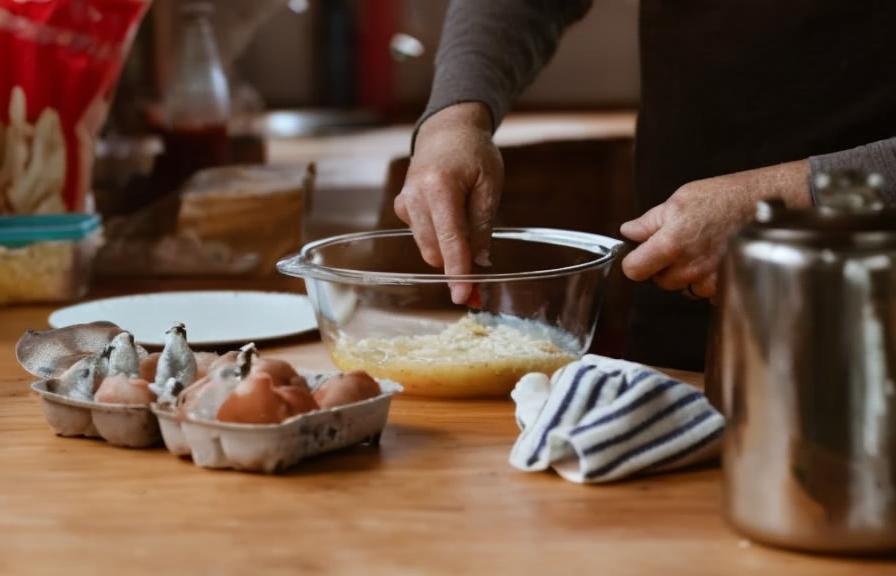Raising quail can be a rewarding and enjoyable experience for both hobbyists and those looking to raise quail for profit. Quail are small, ground-dwelling birds that are known for their delicious eggs and meat. They are relatively easy to care for and can be raised in a variety of environments, making them a popular choice for many poultry enthusiasts. Whether you are interested in raising quail for their eggs, meat, or simply as pets, there are a few key factors to consider when getting started.
Quail are known for their hardiness and adaptability, making them an excellent choice for beginners. They are also relatively low maintenance compared to other poultry, making them a great option for those with limited space or time. Quail can be raised in small backyard setups or on larger farms, and they are known for their ability to thrive in a variety of climates. Additionally, quail are known for their fast growth and high egg production, making them a profitable option for those looking to raise quail for commercial purposes. Overall, raising quail can be a fun and rewarding experience for anyone interested in poultry farming.
Key Takeaways
- Quail are small, low-maintenance birds that are easy to raise and can be a great addition to a backyard farm or homestead.
- When choosing a quail breed, consider factors such as egg production, temperament, and size to find the best fit for your needs and space.
- Setting up a quail habitat involves providing a secure enclosure, appropriate bedding, and access to food and water, as well as considering factors like temperature and lighting.
- Feeding and caring for quail involves providing a balanced diet, clean water, and regular health checks to ensure their well-being and productivity.
- Breeding quail involves creating the right conditions for mating, collecting and storing eggs, and managing brooding and nesting behaviors to support successful reproduction.
Choosing the Right Quail Breed
When it comes to raising quail, choosing the right breed is an important decision that will impact the success of your quail farming venture. There are several different breeds of quail to choose from, each with its own unique characteristics and advantages. Some popular quail breeds include the Coturnix quail, Bobwhite quail, and California quail, among others. Each breed has its own specific traits, such as egg production, meat quality, and temperament, so it’s important to consider your goals and preferences when selecting a breed.
The Coturnix quail is one of the most popular breeds for both commercial and backyard quail farming. They are known for their high egg production, fast growth rate, and relatively calm temperament, making them a great choice for beginners. Bobwhite quail, on the other hand, are known for their delicious meat and are often raised for hunting purposes. California quail are another popular breed known for their beautiful plumage and adaptability to a variety of environments. When choosing a quail breed, it’s important to consider factors such as egg or meat production, temperament, and climate suitability to ensure the success of your quail farming venture.
Setting Up a Quail Habitat
Creating the right habitat for your quail is essential for their health and well-being. Quail can be raised in a variety of environments, including cages, aviaries, or outdoor pens, depending on your space and resources. When setting up a quail habitat, it’s important to consider factors such as space requirements, ventilation, temperature control, and predator protection. Quail are ground-dwelling birds that require ample space to move around and exhibit natural behaviors, so it’s important to provide them with a suitable living environment.
For those raising quail in cages or aviaries, it’s important to provide enough space for the birds to move around comfortably. Additionally, proper ventilation is essential to prevent respiratory issues and maintain air quality within the habitat. Temperature control is also important, as quail are sensitive to extreme temperatures and require a comfortable living environment to thrive. Outdoor pens should be secure and protected from predators such as raccoons, foxes, and birds of prey. Providing suitable shelter and hiding spots within the habitat can also help reduce stress and promote natural behaviors in your quail. Overall, creating a suitable habitat for your quail is essential for their health and well-being.
Feeding and Caring for Quail
Proper nutrition is essential for the health and productivity of your quail. Quail require a balanced diet that includes a combination of commercial feed, fresh water, and occasional treats. Commercial quail feed is available in crumble or pellet form and is formulated to meet the specific nutritional needs of quail at different stages of life. It’s important to provide your quail with access to fresh water at all times, as dehydration can quickly become a serious issue for these birds.
In addition to commercial feed, quail can also benefit from occasional treats such as fruits, vegetables, mealworms, and greens. These treats can provide additional nutrients and enrichment for your quail, but it’s important to offer them in moderation to prevent nutritional imbalances. Caring for quail also involves regular cleaning of their habitat to maintain hygiene and prevent disease. This includes removing soiled bedding, cleaning food and water containers, and regularly inspecting the birds for signs of illness or injury. Overall, providing proper nutrition and care is essential for the health and well-being of your quail.
Breeding Quail
Breeding quail can be an exciting and rewarding aspect of quail farming. Quail are prolific breeders that reach sexual maturity at a young age, making them relatively easy to breed compared to other poultry species. When breeding quail, it’s important to consider factors such as selecting breeding stock, providing suitable nesting areas, and managing brooding behaviors. Selecting healthy breeding stock with desirable traits such as egg production, meat quality, and temperament is essential for producing strong and productive offspring.
Quail require suitable nesting areas that provide privacy and security for laying eggs. This can include nesting boxes or areas with suitable nesting materials such as straw or hay. It’s important to monitor the breeding behavior of your quail to ensure that they are mating successfully and laying eggs regularly. Additionally, providing suitable lighting conditions can help stimulate breeding behavior in your quail. Breeding quail can be a fun and rewarding experience that allows you to expand your flock and potentially increase your egg or meat production.
Incubating Quail Eggs

Incubating quail eggs is an essential step in the breeding process that requires careful attention to temperature, humidity, and turning of the eggs. Quail eggs typically take around 17-18 days to hatch, so it’s important to provide consistent conditions throughout the incubation period. When incubating quail eggs, it’s important to use a reliable incubator that maintains a consistent temperature between 99-100 degrees Fahrenheit and humidity levels around 50-60%.
Turning the eggs several times a day is essential to prevent the embryos from sticking to the shell membrane and promote proper development. It’s important to monitor the development of the embryos by candling the eggs periodically to check for signs of fertility and development. Providing suitable ventilation within the incubator is also important to ensure proper air circulation for the developing embryos. Incubating quail eggs can be a fascinating process that allows you to witness the miracle of new life as the embryos develop and hatch into healthy chicks.
Caring for Quail Chicks
Caring for quail chicks requires careful attention to their nutritional needs, temperature requirements, and socialization. Quail chicks are delicate and require a warm environment with temperatures around 95-100 degrees Fahrenheit during the first week of life. Providing a suitable brooder with a heat source such as a heat lamp or heating pad is essential to keep the chicks warm and comfortable.
Quail chicks also require access to fresh water and starter feed formulated specifically for young chicks. It’s important to monitor their growth and development closely to ensure that they are thriving and receiving proper nutrition. Socialization is also important for young quail chicks, as they benefit from interaction with their siblings and opportunities to explore their environment. Caring for quail chicks can be a rewarding experience that allows you to witness their growth and development as they mature into healthy adult birds.
In conclusion, raising quail can be a rewarding experience that offers the opportunity to produce delicious eggs and meat while enjoying the company of these charming birds. By choosing the right breed, creating a suitable habitat, providing proper nutrition and care, breeding quail, incubating eggs, and caring for chicks, you can successfully raise a thriving flock of quail. Whether you are interested in raising quail as a hobby or for profit, there are many aspects of quail farming to enjoy and explore. With proper knowledge and dedication, raising quail can be a fulfilling endeavor that offers many benefits for poultry enthusiasts.
If you’re interested in raising and breeding quail, you may also want to check out Poultry Wizard’s article on when guinea fowl lay eggs. This informative piece provides valuable insights into the breeding habits of guinea fowl, offering practical tips and advice that can be applied to quail breeding as well. Whether you’re a novice or experienced breeder, this article is a great resource for expanding your knowledge of poultry breeding.
FAQs
What are the benefits of raising and breeding quail?
Raising and breeding quail can provide a sustainable source of protein, eggs, and income. Quail are also relatively low maintenance and can be raised in small spaces.
What do quail eat and how do you care for them?
Quail eat a diet of seeds, grains, and insects. They require a clean and dry living environment with access to fresh water. Proper housing and protection from predators is also important.
How do you breed quail?
Quail breeding involves providing a suitable environment for mating, collecting and incubating eggs, and caring for the chicks once they hatch. It’s important to ensure proper nutrition and a stress-free environment for successful breeding.
What are some common health issues in quail?
Common health issues in quail include respiratory infections, parasites, and injuries from overcrowding or aggressive behavior. Regular monitoring and proper care can help prevent and address these issues.
What are some potential challenges in raising and breeding quail?
Challenges in raising and breeding quail can include maintaining proper temperature and humidity levels for incubation, preventing disease outbreaks, and managing aggressive behavior in crowded conditions. Proper planning and management can help mitigate these challenges.
Meet Walter, the feathered-friend fanatic of Florida! Nestled in the sunshine state, Walter struts through life with his feathered companions, clucking his way to happiness. With a coop that’s fancier than a five-star hotel, he’s the Don Juan of the chicken world. When he’s not teaching his hens to do the cha-cha, you’ll find him in a heated debate with his prized rooster, Sir Clucks-a-Lot. Walter’s poultry passion is no yolk; he’s the sunny-side-up guy you never knew you needed in your flock of friends!







